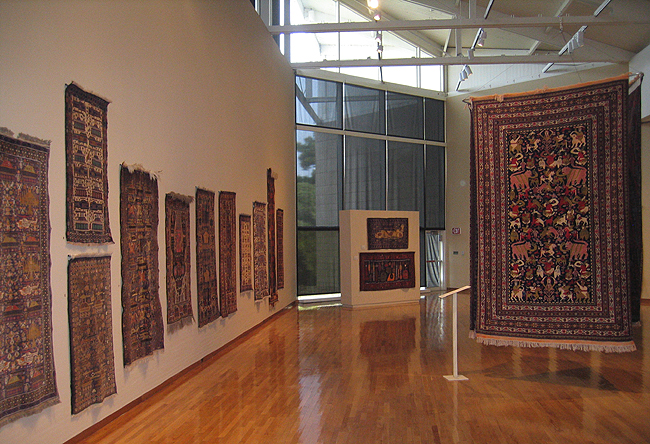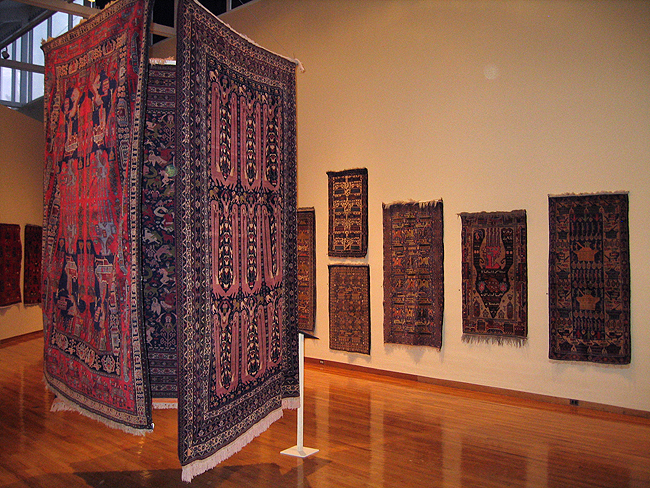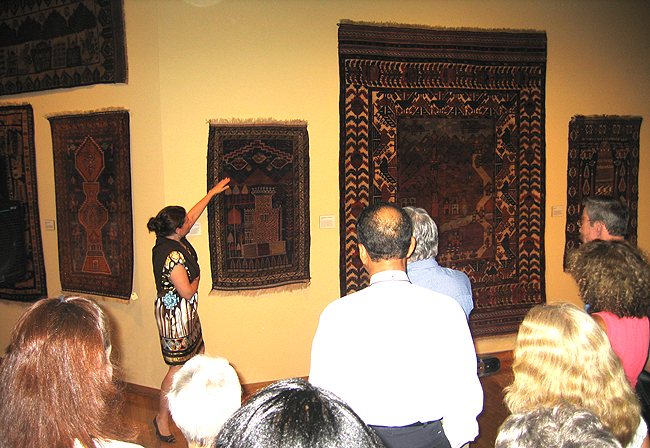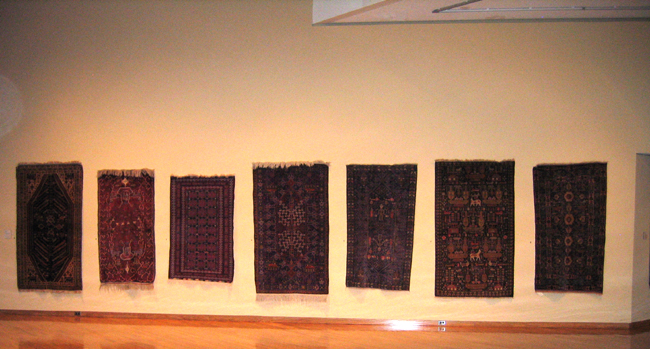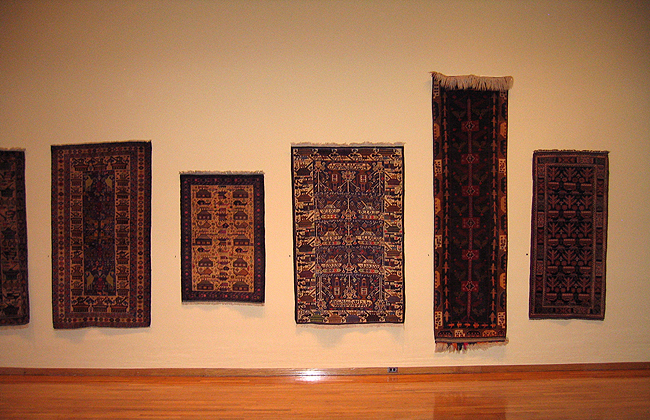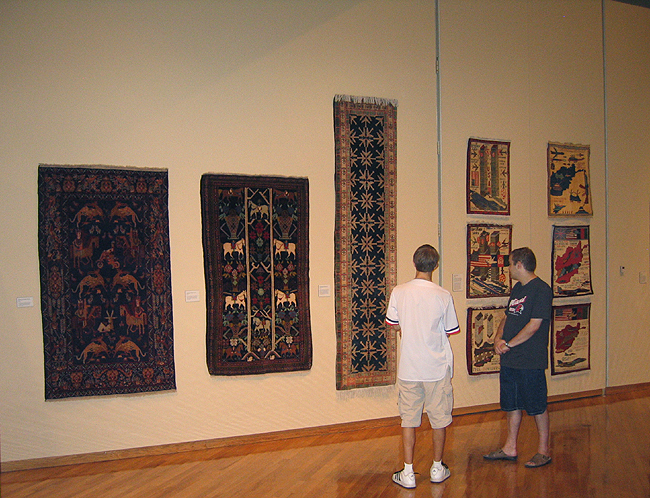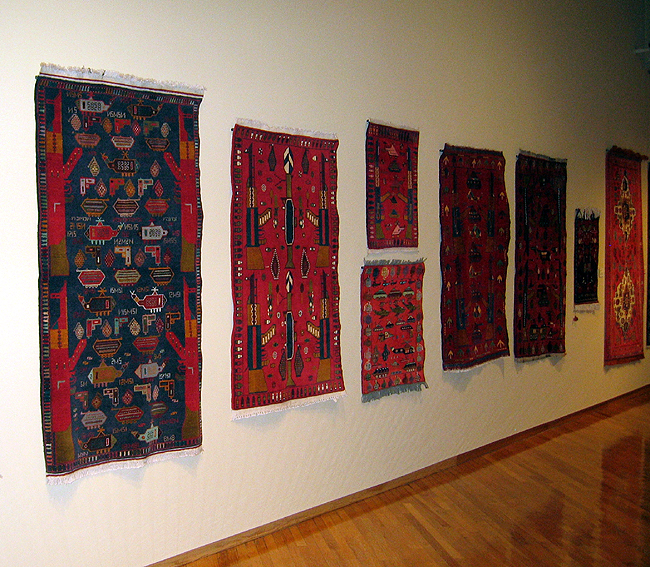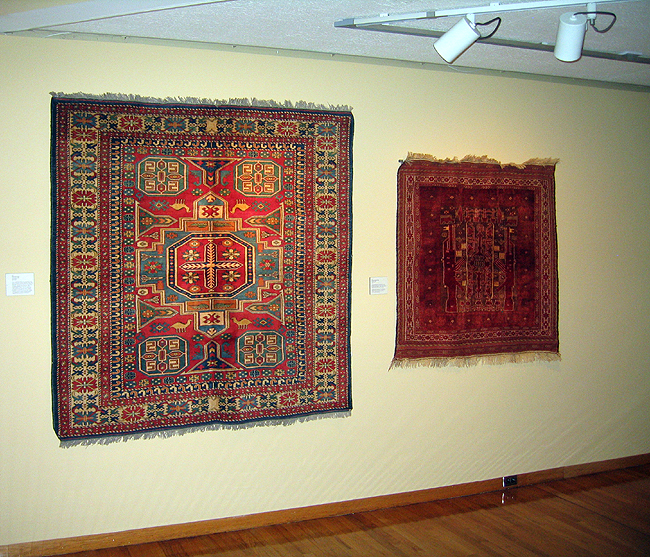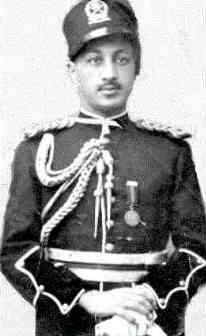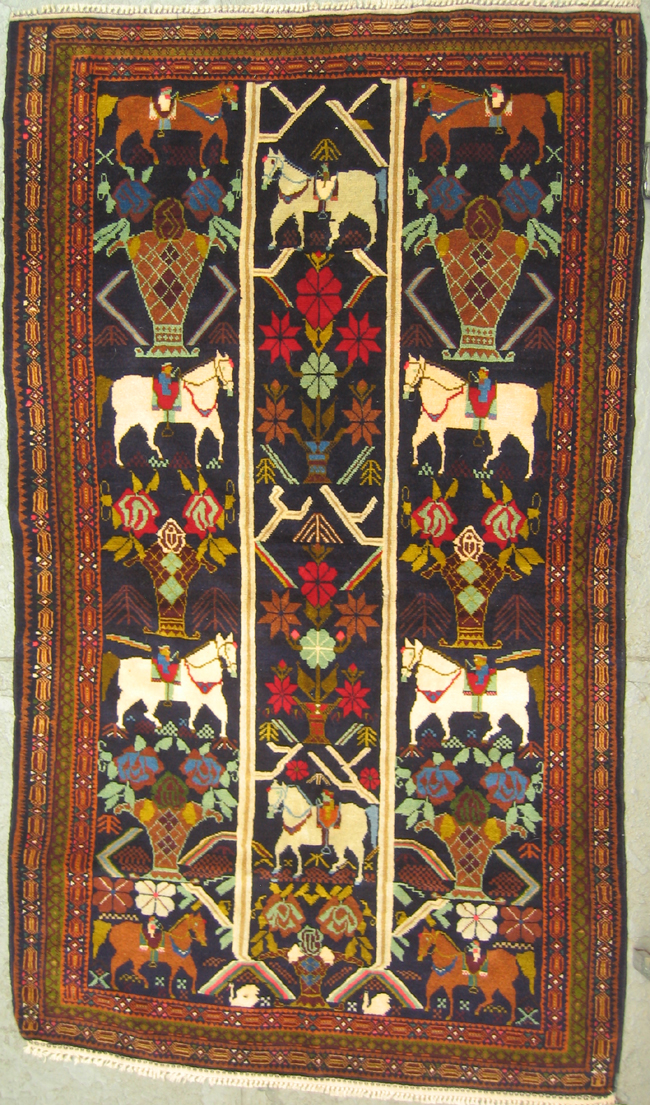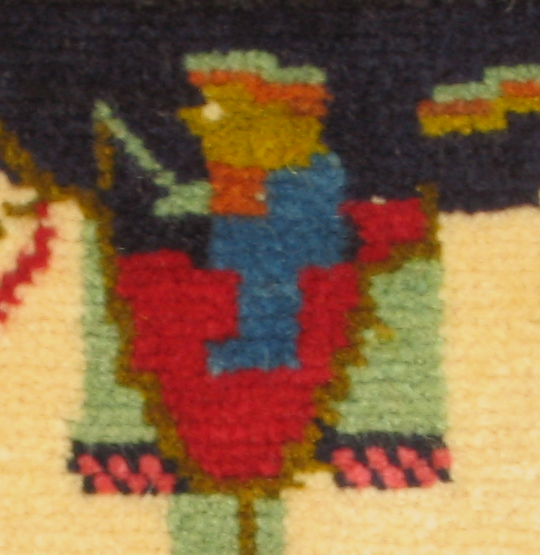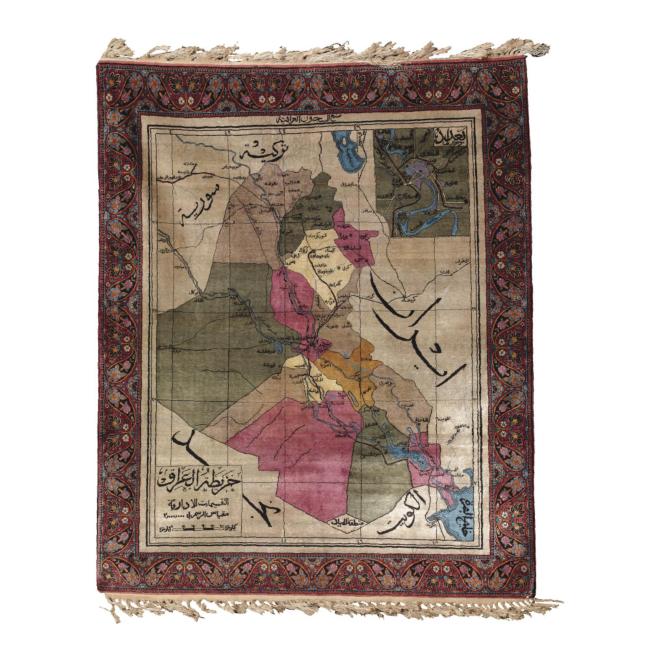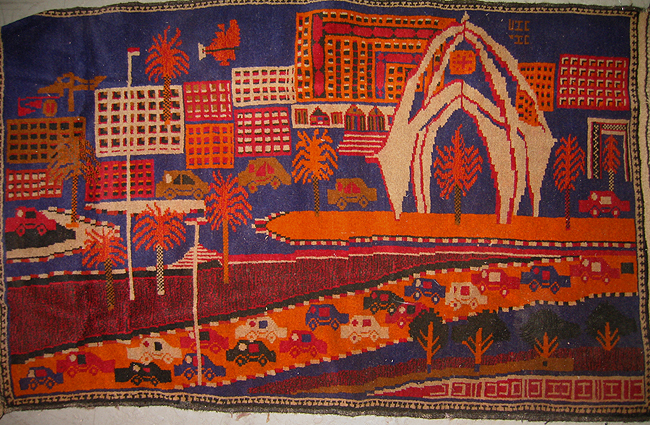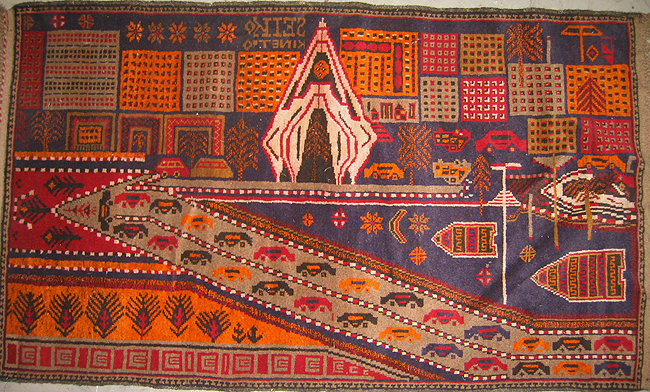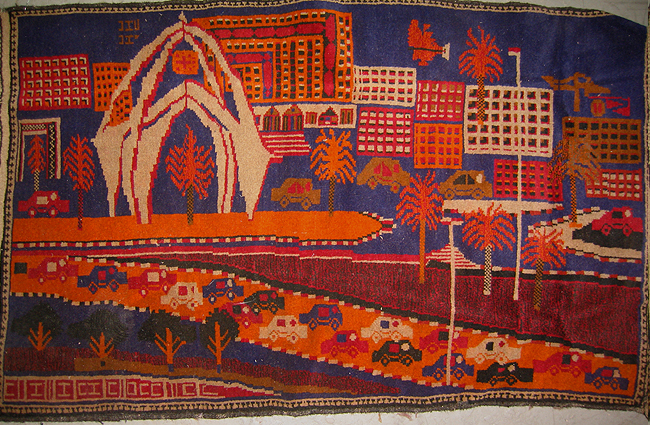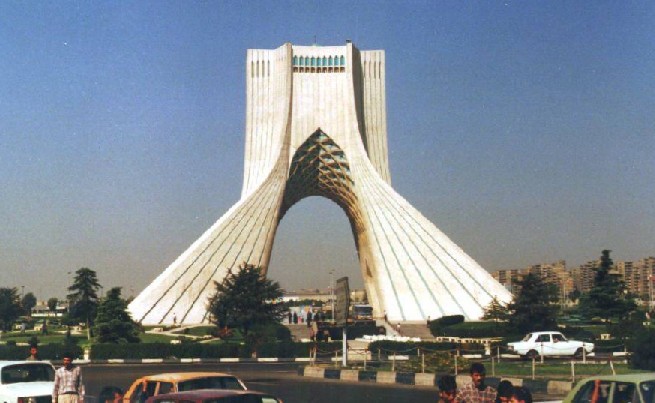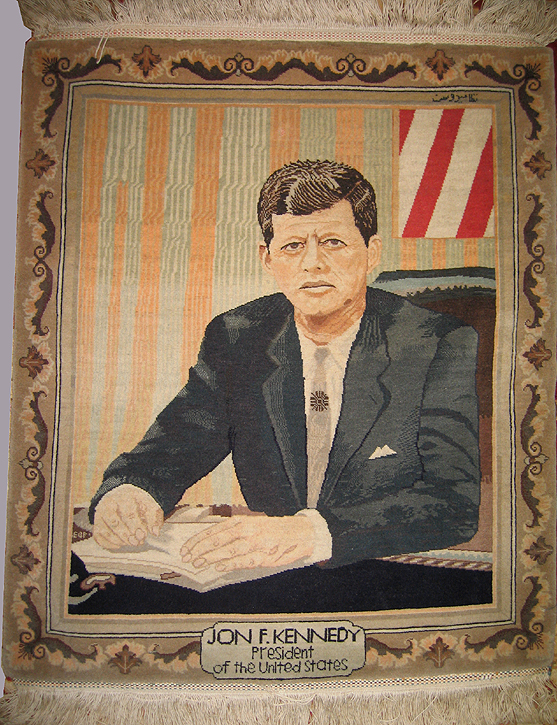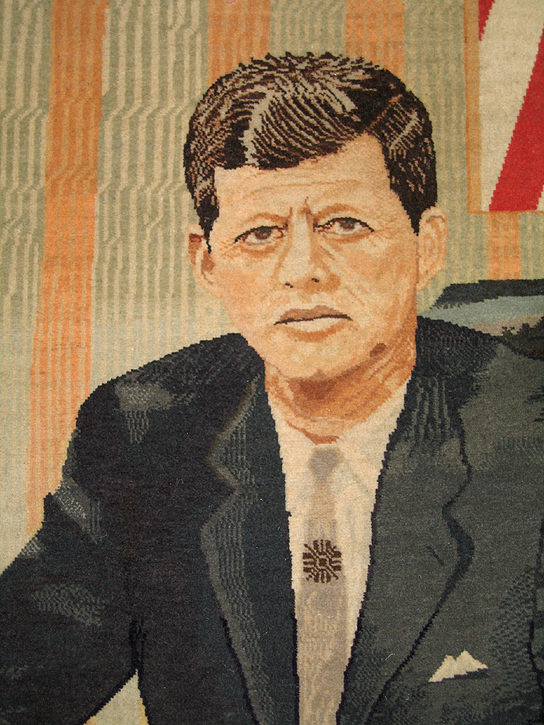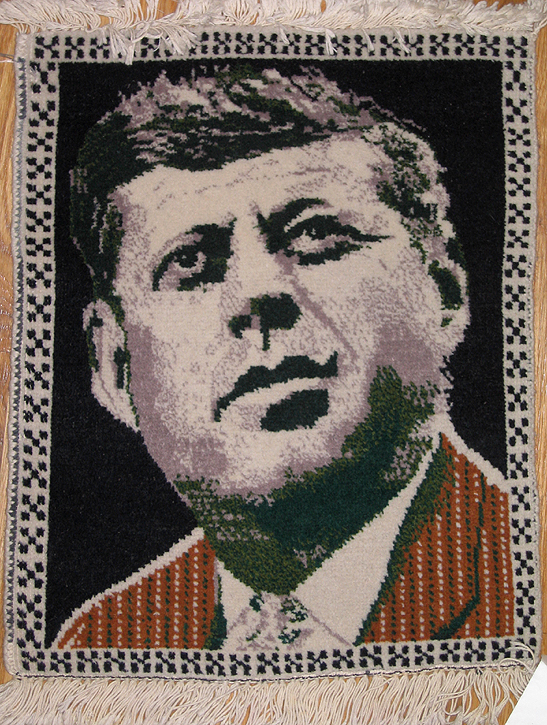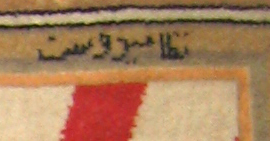Here are a few links about the exhibition at the Miami University Art Museum.
Some of the rugs in the museum exhibition serve as warnings to people to be aware of unexploded ordinances, illustrating what not to touch. Others contain maps and other images that detail the Soviet occupation, and later, the terrorist attacks against the United States in 2001.
“These rugs are quite mysterious,” he [Kremmer] said. “They haven’t been studied in any great detail, who made them and why, what are the messages. That’s why this exhibit is important.”
Link from The Journal News
And a Symposium description from The Oxford Press
The featured exhibition, “Tanks, Helicopters, Guns and Grenades: The Afghan War Rugs,” explores how the changing political landscape of Afghanistan, beginning with the Soviet invasion of 1979, has influenced the rug weavers of the area as they replaced traditional motifs with modern weaponry and warfare.
The result is an art form that resides precariously “alongside contemporary and avant-garde art, and political
art and propaganda,†Marsh said. This exhibition will showcase approximately 80 war rugs from a private New York collection and offers a rare opportunity to investigate the complex historical, political and social realities of this region.
From Richard Jones’ Blog
Another Richard Jones’ blog entry with photos by Nick Daggy
